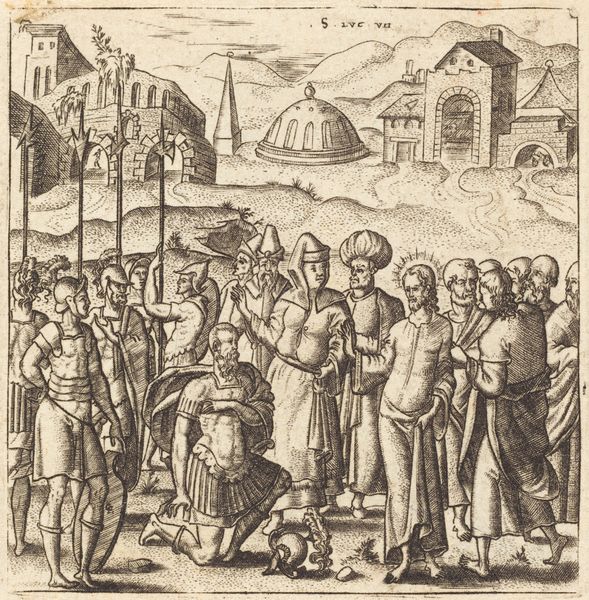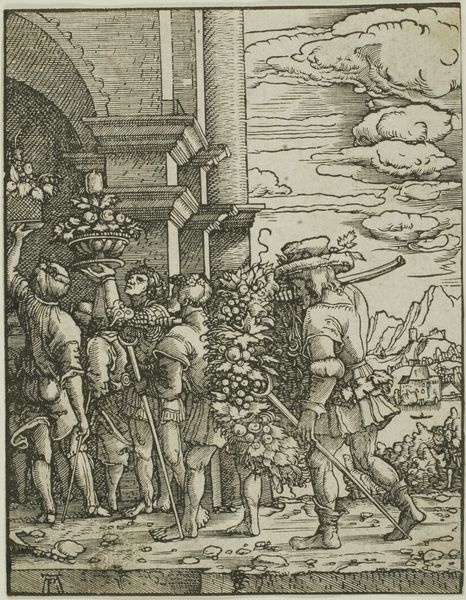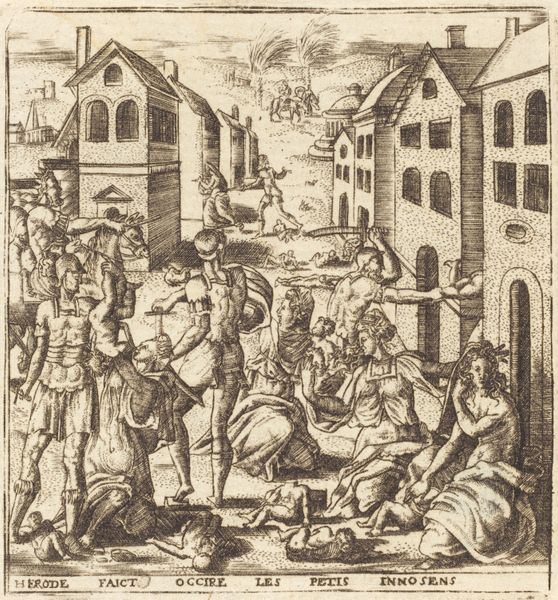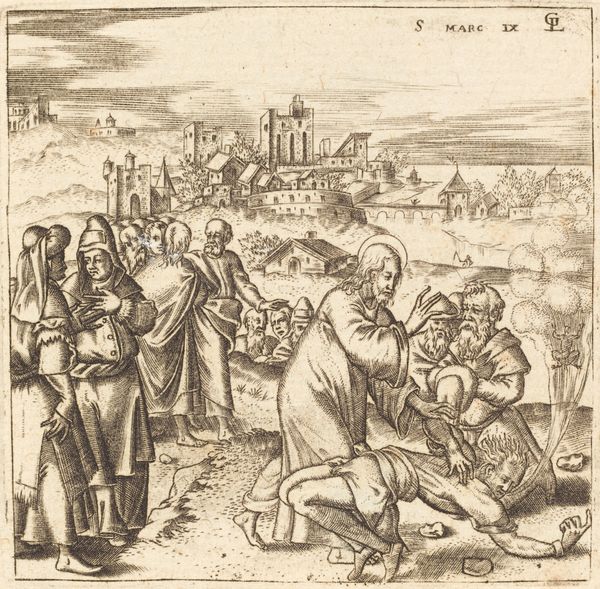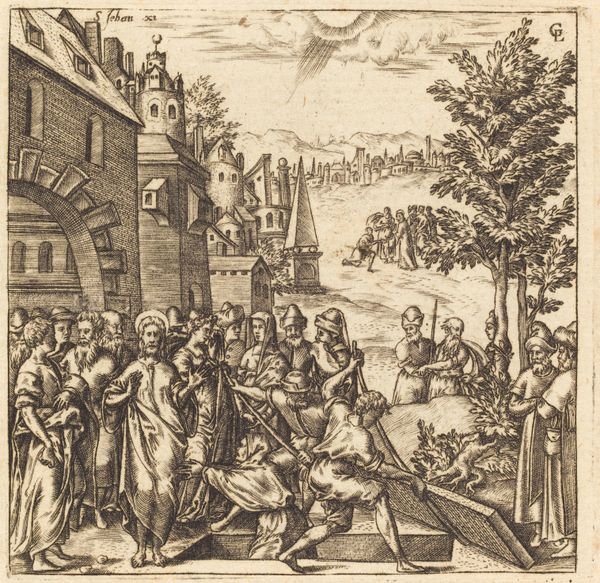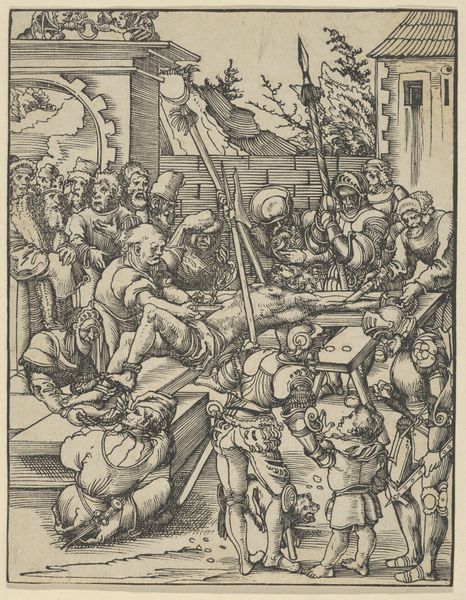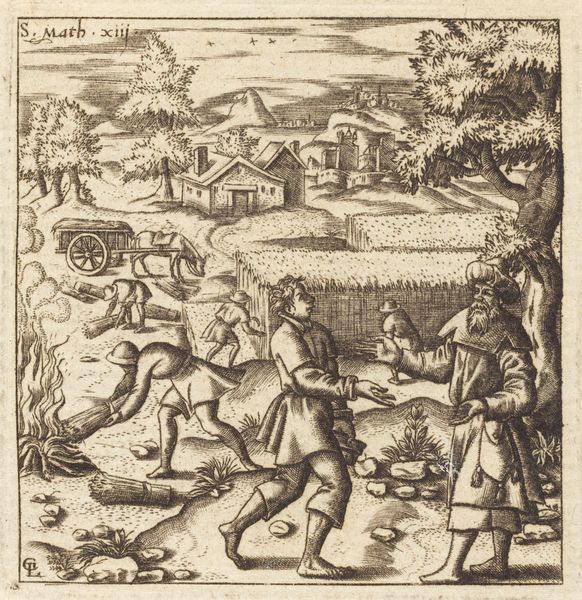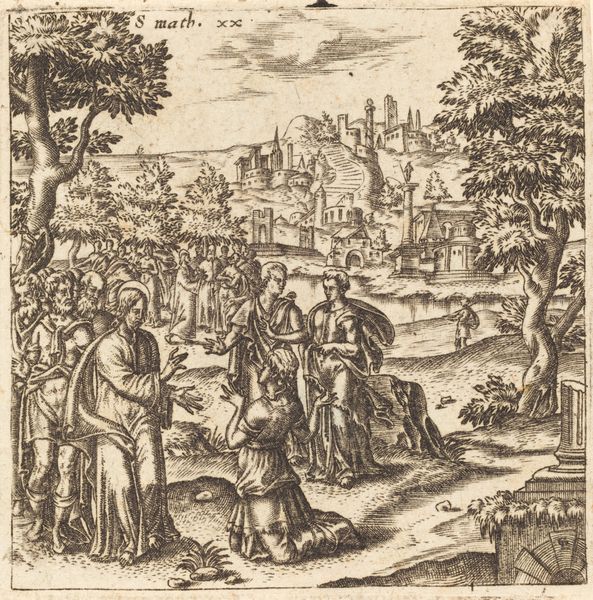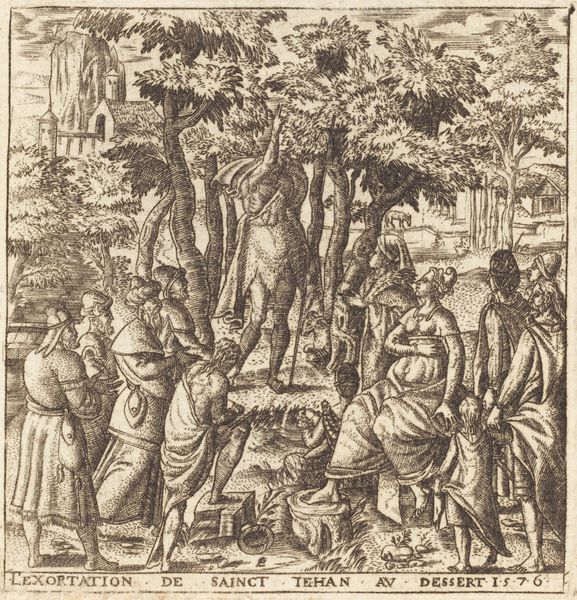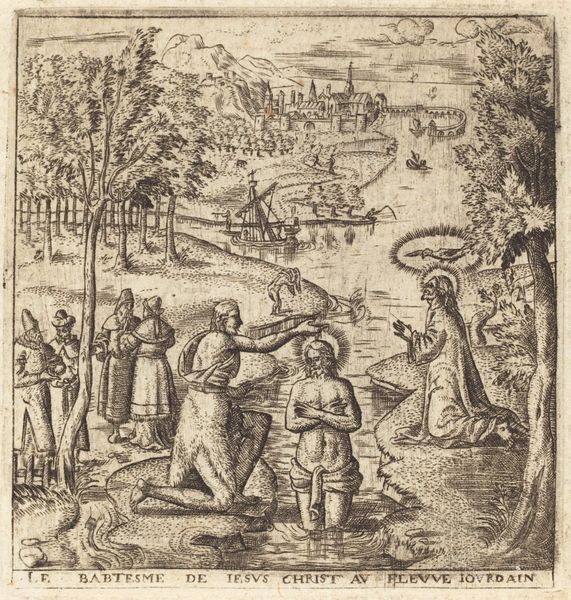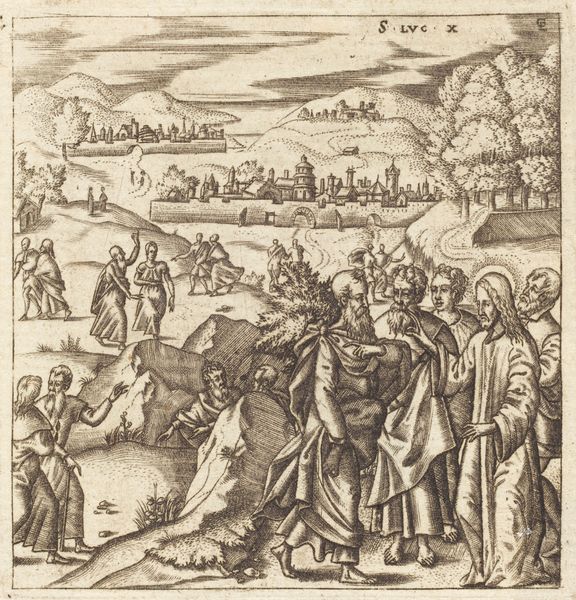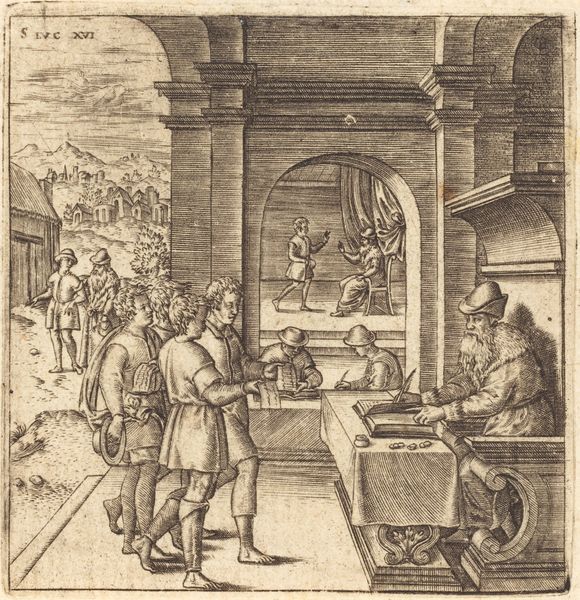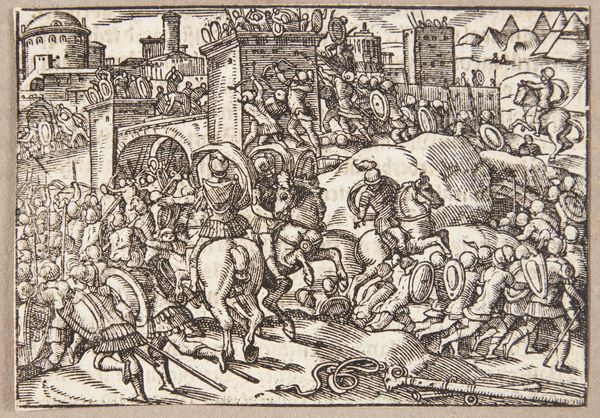
print, engraving
#
narrative-art
# print
#
landscape
#
mannerism
#
figuration
#
history-painting
#
engraving
Copyright: National Gallery of Art: CC0 1.0
Editor: Here we have Léonard Gaultier's engraving, "The Parable of the Laborers in the Vineyard," created around 1576 to 1580. It's intricate and depicts quite a scene; I'm curious about how to interpret all the activity. What stands out to you? Curator: The figures strike me first. Look at their expressions and gestures. Gaultier is relaying the complexities of fairness and divine reward. What symbolic weight do you see in this setting—a vineyard bustling with laborers set against a detailed landscape? Editor: I see some are being hired while others are already hard at work in the fields. Does the contrast in their positions hold a deeper meaning? Curator: Absolutely. Consider the historical and cultural context: in 16th century Europe, social hierarchies were believed to be divinely ordained. This image engages with those concepts of predetermined social roles, questioning ideas of deserving reward based on work done. Notice the tower and the town on the hillside. What might those details convey to contemporary viewers? Editor: Maybe they represent earthly power and the promise of future prosperity through labor? It feels like there's a connection between the individual acts of labor and a larger societal structure. Curator: Precisely! The landscape isn't just scenery; it’s a representation of the world and their place within it. It reflects the anxieties around social mobility and justice in that era. It poses questions that still resonate: What is fair compensation? What truly determines our worth? Editor: So, it's not just a biblical illustration, but a commentary on the social issues of the time, all coded through symbolic imagery. It really invites you to think. Curator: Indeed. And remember, images often act as mirrors, reflecting the viewers’ own values and experiences back at them. Editor: I'll definitely be looking at engravings with new eyes. Curator: And perhaps with a deeper understanding of how artists use symbols to speak volumes across centuries.
Comments
No comments
Be the first to comment and join the conversation on the ultimate creative platform.
